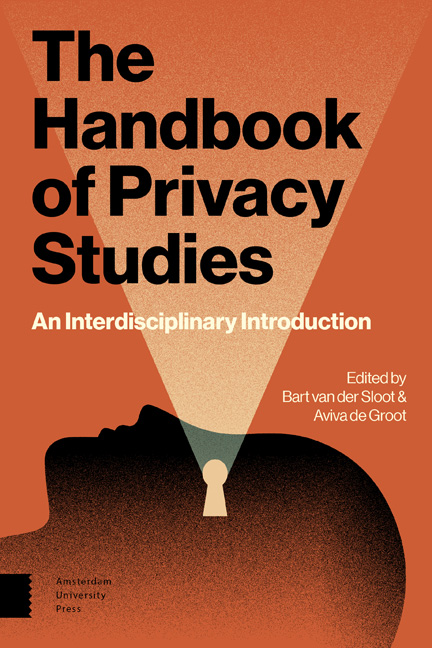Book contents
- Frontmatter
- Contents
- Introduction
- 1 Privacy from a Historical Perspective
- Legislating Privacy: Technology, Social Values, and Public Policy
- 2 Privacy from a Legal Perspective
- Three Dimensions of Privacy
- 3 Privacy from an Ethical Perspective
- Nudging: A Very Short Guide
- 4 Privacy from an Economic Perspective
- Security, Privacy, and the Internet of Things (IoT)
- 5 Privacy from an Informatics Perspective
- Political Science and Privacy
- 6 Privacy from an Intelligence Perspective
- A Privacy Doctrine for the Cyber Age
- 7 Privacy from an Archival Perspective
- Medical Privacy: Where Deontology and Consequentialism Meet
- 8 Privacy from a Medical Perspective
- Privacy Law – on the Books and on the Ground
- 9 Privacy from a Media Studies Perspective
- Diversity and Accountability in Data-Rich Markets
- 10 Privacy from a Communication Science Perspective
- Still Uneasy: a Life with Privacy
- 11 Privacy from an Anthropological Perspective
- About the Authors
A Privacy Doctrine for the Cyber Age
- Frontmatter
- Contents
- Introduction
- 1 Privacy from a Historical Perspective
- Legislating Privacy: Technology, Social Values, and Public Policy
- 2 Privacy from a Legal Perspective
- Three Dimensions of Privacy
- 3 Privacy from an Ethical Perspective
- Nudging: A Very Short Guide
- 4 Privacy from an Economic Perspective
- Security, Privacy, and the Internet of Things (IoT)
- 5 Privacy from an Informatics Perspective
- Political Science and Privacy
- 6 Privacy from an Intelligence Perspective
- A Privacy Doctrine for the Cyber Age
- 7 Privacy from an Archival Perspective
- Medical Privacy: Where Deontology and Consequentialism Meet
- 8 Privacy from a Medical Perspective
- Privacy Law – on the Books and on the Ground
- 9 Privacy from a Media Studies Perspective
- Diversity and Accountability in Data-Rich Markets
- 10 Privacy from a Communication Science Perspective
- Still Uneasy: a Life with Privacy
- 11 Privacy from an Anthropological Perspective
- About the Authors
Summary
A privacy doctrine built for the cyber age must address a radical change in the type and scale of violations that the nation – and the world – face, namely that the greatest threats to privacy come not at the point that personal information is collected, but rather from the secondary uses of such information. Often-cited court cases, such as Katz, Berger, Smith, Karo, Knotts, Kyllo – and most recently Jones – concern whether or not the initial collection of information was legal. They do not address the fact that personal information that was legally obtained may nevertheless be used later to violate privacy. That the ways such information is stored, collated with other pieces of information, analysed, and distributed or accessed – often entails very significant violations of privacy. While a considerable number of laws and court cases cover these secondary usages of information, they do not come together to make a coherent doctrine of privacy – and most assuredly not one of them addresses the unique challenges of the cyber age.
Here I attempt to show that in order to maintain privacy in the cyber age, boundaries on information that may be used by the government should be considered along three major dimensions: The level of sensitivity of the information, the volume of information collected, and the extent of cybernation. These considerations guide one to find the lowest level of intrusiveness holding constant the level of common good. A society ought to tolerate more intrusiveness if there are valid reasons to hold that the threat to the public has significantly increased (e.g. there is a pandemic), and reassert a lower level of intrusiveness when such a threat has subsided.
Sensitivity
One dimension is the level of sensitivity of the information. For instance, data about a person's medical condition is considered highly sensitive, as are one's political beliefs and conduct (e.g. voting) and personal thoughts. Financial information is ranked as less sensitive than medical information, while publicly presented information (e.g. licence plates) and routine consumer choices much less so.
These rankings are not based on ‘expectations of privacy’ or on what this or that judge divines as societal expectations. Rather, they reflect shared social values and are the product of politics in the good sense of the term, of liberal democratic processes, and moral dialogues.
- Type
- Chapter
- Information
- The Handbook of Privacy StudiesAn Interdisciplinary Introduction, pp. 295 - 298Publisher: Amsterdam University PressPrint publication year: 2018



